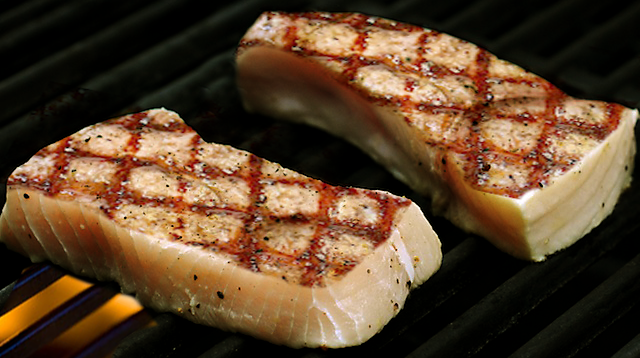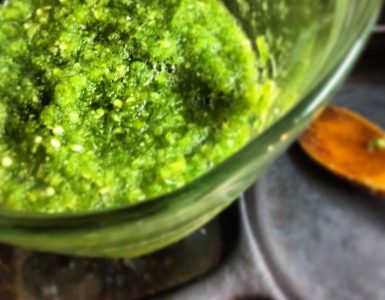If you haven’t added Grilled Gulf Bull Shark to your grill-session arsenal … you should.
Anglers from the Southeastern U.S. can attest to the commonplace in seeing bull sharks in the Gulf of Mexico. They can also explain how they are abundant and easy to catch at certain times of year, which means Grillax Nation just added shark steaks to the menu.
Grilled Gulf Bull Shark
- 4 bull shark steaks
- 4 tbsp soy sauce
- 2 tbsp balsamic vinegar
- 1/2 cup lemon juice
- 4 tbsp olive oil
- 2 tbsp chopped cilantro
- 2 cloves minced garlic
- 1 tsp black ground pepper
- 4 scallions, chopped
Combine soy sauce, vinegar, lemon juice, oil, parsley, garlic and pepper. Pour over steaks. Marinate for 30 mins, turing once half way through. Remove fish, reserve marinade. Grill on medium about 5 mins per side or until the internal temperature of the shark steak is 145 degrees. Use a Thermapen for instant reading while grilling. Brush with marinade before turning. Serve with saffron rice and mango salsa (see recipe).
Mango Salsa
Mango salsa is an outstanding compliment to any seafood, but on top of Blackened/Grilled Gulf Bull Shark, it’s just that much better!
- 2 tablespoons olive oil
- 3 whole jalapeño chiles
- 4 tablespoons chopped fresh cilantro
- 2 mangos, peeled/pitted/diced
- 1 lime, juiced
- 1/2 large red onion, minced
- Kosher salt
- Coarse ground pepper
- Heat the oil in saute pan over medium-high heat.
- Lightly fry the jalapeños for about five minutes, until blistered. Set aside to cool.
- After cooling, remove stems and seeds and finely chop the jalapeños and place them into a large mixing bowl.
- Add the cilantro, mango, lime juice and onions and season with salt and pepper.
- Fold together, top with more fresh cilantro and serve immediately.
Quick Tip
With any shark, you want to clean the fish as quickly after catching as possible to avoid any fouling. I bet many of you didn’t know that sharks do not urinate. Instead, they excrete nitrogenous wastes as urea, which is stored in their in the blood, and the nitrogenous wastes are expelled trough their skin. When a shark dies, the urea in their blood and flesh deteriorates into ammonia, which is why shark meat often tastes and smells of ammonia.
How to clean a shark
- Take the tip of a boning knife and make a puncture in the center of the head, ahead of the gills, with the knife sideways so that the blade is facing one side or the other. The correct spot for the puncture is where the harder part of the head sort of softens.
- From the puncture, continue the cut to one side, angling back across the top of the gills, then down just behind the gills toward the pectoral fins. It is easy to detect when the cut enters the abdominal area – the flesh surrounding it is quite thin. When at the abdominal area, try to avoid cutting much deeper than the belly flesh as not to puncture the internal organs to avoid a big mess to clean up. While cutting into the belly flesh, angle the cut toward the rear above the pectoral fins and continue the cut along the side, above the pelvic fins straight back to the end of the abdominal cavity, coming to the shark’s centerline behind the vent and ahead of the anal fin.
- Then, go back to the head at the first puncture, and cut away the other side in the same way. When this is done, the head, belly, and organs come away in one big piece leaving the usable meat — the upper rear torso with flesh and skin. Some anglers freeze the shark torso and fillet it out at a later time.














